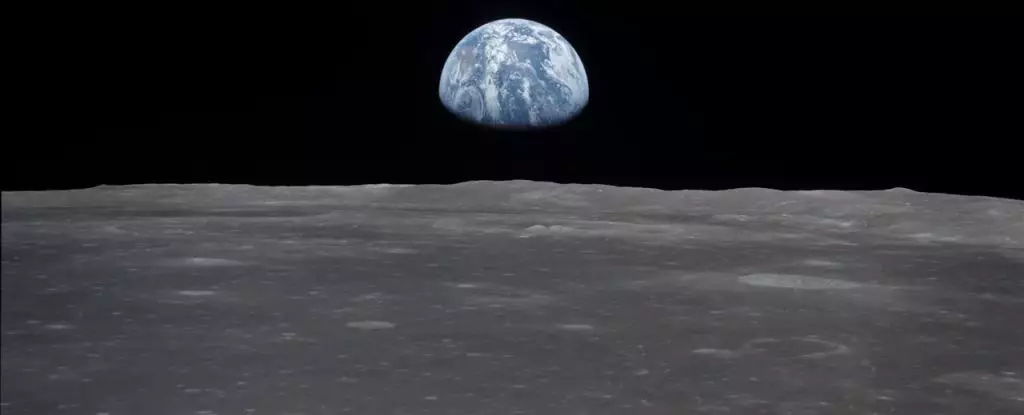The Moon, despite appearing barren and exposed, actually has a thin layer of gasses surrounding it known as an exosphere. This exosphere has puzzled scientists for quite some time, as the Moon lacks a magnetosphere like Earth, which should have caused its gasses to be stripped away by solar activity. The constant replenishment of the Moon’s exosphere has been a mystery, but recent research has shed light on the source of this phenomenon.
Scientists, led by geochemist Nicole Nie of MIT, have discovered that tiny micrometeorites, smaller than grains of dust, play a significant role in creating and maintaining the Moon’s atmosphere. When these micrometeorites collide with the lunar surface, they kick up lunar dust, vaporizing it and releasing atoms into the space around the Moon. This impact vaporization process has been identified as the dominant mechanism responsible for generating the Moon’s atmosphere.
To further understand the processes involved in the creation of the Moon’s exosphere, researchers analyzed data from the Lunar Atmosphere and Dust Environment Explorer (LADEE) mission, which operated from 2013 to 2014. This data revealed that both micrometeorite impacts and ion sputtering, where atoms are ejected from the lunar surface by charged particles carried by the solar wind, contribute to the generation of the lunar exosphere. However, the impact of micrometeorites was found to be more significant than the influence of the solar wind.
In order to confirm the contributions of micrometeorites and ion sputtering, researchers examined samples of Moon dirt collected during the Apollo program. By analyzing the presence of potassium and rubidium in these samples, both easily vaporized elements, the researchers were able to determine the impact of each process. The results showed that while both processes play a role in generating the lunar exosphere, the contribution of micrometeorites outweighs that of the solar wind.
The findings of this study not only enhance our understanding of the Moon’s atmosphere but also have implications for planetary exploration beyond Earth. Similar processes involving micrometeorite impacts may be occurring on other celestial bodies in the Solar System, such as asteroids and moons. Missions to retrieve samples from these bodies, such as the European Space Agency’s planned mission to Martian moon Phobos, could provide further insights into the role of micrometeorites in shaping planetary atmospheres.
The research into the Moon’s exosphere and the impact of micrometeorites has revealed a fascinating aspect of our celestial neighbor. By unraveling the mysteries of how the Moon’s atmosphere is generated and maintained, scientists have gained valuable insights into the processes that shape planetary atmospheres across the Solar System. This knowledge not only advances our understanding of the Moon but also paves the way for future exploration of other worlds beyond Earth.


Leave a Reply